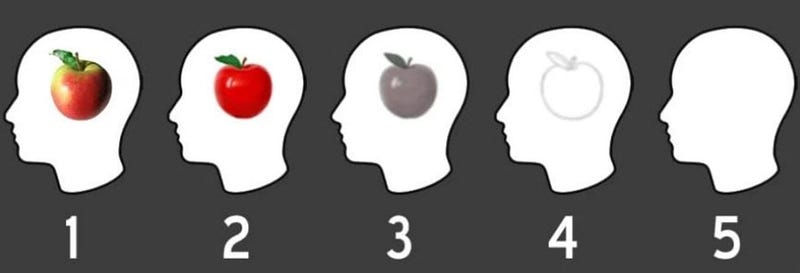Understanding Aphantasia: Life Without Mental Imagery
Written on
Chapter 1: Exploring Mental Imagery
Consider this experiment: Close your eyes and attempt to visualize an apple. What do you notice? How vivid is the image? How much detail can you discern? What color is the apple? Does it glisten with a droplet of water or reflect light? What surface is it resting on? Is there anything in the background, or is it simply suspended in empty space?
Now, evaluate your visualization: Use the following scale to assign a score based on your mental image. A score of 1 indicates you saw it as if in a photograph. If your image was more abstract, adjust your score accordingly. A score of 5 suggests you couldn't visualize any aspect of the apple; it was just an empty space or darkness.

It's crucial to note that there are no right or wrong outcomes in this exercise; the goal is to investigate a phenomenon known as aphantasia, characterized by the inability to form mental images. Personally, I find myself in the middle of the scale (3–4), occasionally perceiving vague impressions that are fleeting and indistinct, reminiscent of dream-like visuals.
Aphantasia was initially identified by Francis Galton in 1880 but remained largely unexplored until recent interest was sparked by a 2015 study led by Adam Zeman at the University of Exeter. Zeman's team introduced the term "aphantasia," derived from Greek, meaning "without an image." If you scored a 5 in the experiment, you may be experiencing aphantasia.
The broader context: Visualizing a sunset or the face of a loved one is instinctive for many, yet for approximately 1–3% of individuals with aphantasia, this ability is nonexistent. During my research for this article, I discovered that those claiming to have aphantasia can still dream and visualize scenes in their dreams.
Why this matters: Imagine reading a novel devoid of any mental imagery of the scenes or characters. For some, this is their lived reality. Aphantasia transcends merely lacking visualization; it signifies a fundamentally different way of experiencing the world.
Impact on creativity: Does aphantasia impede creativity? Not necessarily. Numerous individuals with aphantasia possess remarkable creativity and employ alternative methods to convey ideas and emotions. For instance, Ed Catmull, co-founder of Pixar, has aphantasia yet led a studio renowned for its vibrant visual storytelling. This suggests that creativity can flourish in various forms, not solely dependent on visualization.
The science behind it: Research regarding aphantasia is still nascent. Initial studies indicate that individuals with aphantasia may utilize distinct cognitive strategies for recalling information. Instead of depending on visual images, they may concentrate on abstract concepts or verbal descriptions. Personally, I find it challenging to visualize images clearly, yet entire scenes can unfold in my mind like a film, albeit blurry and more impressionistic. This illustrates the vast diversity in our perceptual experiences.

What color do you see in the dress? Blue and black, or white and gold?
Closing thoughts: Just as the viral phenomenon from 2015 showcased our varied visual perceptions, aphantasia reveals the differences in our internal experiences. It highlights how our subjective perceptions can differ significantly from one person to another. I hope this exploration encourages you to reflect on your inner experiences, thoughts, and dreams. There is an expansive realm of understanding waiting to be uncovered in our mental landscapes.
Chapter 2: Videos on Aphantasia
Discover more about aphantasia through these insightful videos:
In this video, individuals share their experiences of aphantasia, including the challenges they face in visualizing concepts.
This documentary explores the phenomenon of aphantasia and features interviews with people who describe life without a mind's eye.